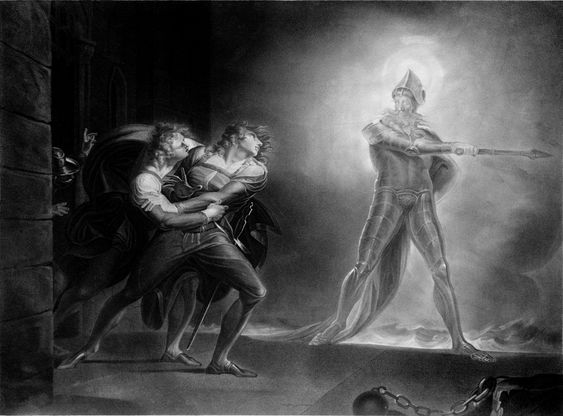Fascism – A Descriptive Definition
"... For the term “fascism” to retain some meaning, we cannot just use it to mean something we dislike."

📩 If you have any questions, comments, or suggestions - please contact Robbie Sterwart on Tela:
https://www.tela.app/id/robbie_stewart
Preface
I have found myself profoundly disturbed by political developments over the last ten years. Far-right attitude seeped into traditionally moderate political spaces, and the far-right has mobilized itself extremely effectively. As I write this, anti-Muslim riots have raged across some English towns, and I do not doubt that they will spread over the border to my native Scotland before long. Hatred of the “other” has become normalized to a terrifying degree.
We cannot deprive ourselves of scalpels with which to excise far-right ideology. One such scalpel is a proper understanding of far-right thought. If we can name our enemy when we see them, and be unafraid to do so, then we can begin to take effective steps against their mobilization. The term “Fascism” has been somewhat devalued - many have been tarred with the “Fascist” brushstroke over the years, and people have their own idea of what it means. Rather like the judge’s observation on obscenity in Jacobellis v Ohio, you “know it when you see it”, but that vagueness is unhelpful. We need to be careful and judicious in calling out the heirs of that tradition. For the term “fascism” to retain some meaning, we cannot just use it to mean something we dislike. I am a proud member of the “Words Should Mean Something” brigade and am against using “Fascist” to decry anyone who does not meet the definition.
Defining Fascism
Fascism is an ideology like any other, with its own internal consistency and logic. Roger Griffin has defined the “ideal type” of Fascism or rather, Fascism rendered down to its purest components as “Palingenetic, Populist Ultranationalism.” Unfortunately, these terms mean absolutely nothing to most people. And why should they? Academic concerns surrounding definition have no purpose in day-to-day conversation. But, as far-right groups are becoming increasingly influential across the Western world, we must be equipped to explain what they are in precise terms, and why “Fascism” applies to them.
By explaining each component of this definition, we can better understand how Griffin defines the “Ideal Type” of Fascism and apply them as a litmus test for describing various ideas or movements as “Fascist”.
“Palingenetic, …”
Palingenesis is a term that derives from biology. It describes something being reborn into the prime of itself – renewed with all its power and vigour. This is what the Fascist wishes to enact in society. The Fascist spurns present society as decadent and believes that its institutions have failed in their responsibility to govern and instill within society “correct” cultural values. Remedying this situation, in the Fascist mind, requires the rapid mobilization and transformation of society so that it may be regenerated to an imagined height. These imagined heights typically derive from mythical interpretations of history, hearkening back to a supposed golden age when the society was perceived to be at its most glorious. The classic example is Mussolini’s emphasis of Italian descent from the Roman Empire – such a glorious height was seen as a model to emulate, despite modern Italians having very little in common with their geographic ancestors.
Relatedly, George Mosse, author of ‘The Fascist Revolution’ characterizes Fascism as both ‘revolutionary’ and ‘reactionary’. Revolutionary, as it desires a complete overhaul of society’s present institutions. Reactionary, as it frames this revolutionary sentiment within the rubric of turning back the clock on social innovations perceived to be decadent. Without the revolutionary component – the desire to sweep institutions and social innovations aside so that the nation may rise like a phoenix from the ashes – a movement is not fascist. A movement wishing to maintain the status quo or revert to a previous status quo but, crucially, without bringing a complete societal overhaul, is merely reactionary. Fascism brings in the new in the guise of the old, skinning history and wearing it as a cloak to justify its actions.
“…Populist”
Populism is simply a strategy of appealing to popular sentiments within the country – to portray one’s movement as the voice of the silent majority. Populism has experienced a resurgence on both the left and right wings of the political spectrum, which can be observed in the rise of Donald Trump in the United States or the Brexit movement in the United Kingdom. Populism is not, however, inherently Fascist. Fascism makes populism concomitant with Ultranationalism and Palingenesis. This means that the rhetoric of populist Fascist politics will paradoxically exalt the nation as simultaneously a reservoir of great strength and yet somehow in terminal decline. Minority populations and ideological opponents are targeted as symbols and vessels of this decline, as ultranationalism gives no room for alternatives to the exalted nation.
As part of its populism, Fascism is also very heavily concerned with the mass-mobilization of its followers – it is a participatory movement in which people are supposed to demonstrate public allegiance to the cause. Often, Fascist movements will demonstrate this by having a uniformed, sometimes paramilitary, branch such as the Squadristi or “Blackshirts” of Mussolini’s Italy. Mass-rallies - such as Oswald Mosley’s “Olympia” rally in 1934 - are also a common means of generating support for Fascist causes. Devotion to a singular leader can also emerge as part of populist politics – a figurehead for a movement makes it far easier to identify with than an obscure ideological program. In a Fascist context, the leader can be represented as the figure through whom the population can vicariously enact their collective will – almost a sort of ‘avatar’ of the nation as opposed to a mere individual.
“…Ultranationalism.”
Ultranationalism is the practice of exalting one’s nation above all others, to an extent that often leads to xenophobia or the exclusion of those who do not meet an increasingly narrowing criteria of the national group. Indeed, this can also take the form of invalidating other group’s own national identities, arguing that they should unite with the national group of which they are “truly” a part of. Minority groups within the ultranationalist state are seized upon as anathema to the exalted nation, and as such must be purged. The Nazi idea of lebensraum can be seen as a prime example. The German nation was considered exalted above all others, and as such better deserving of land from other nations who were deemed as inferior, and thus slated for extinction.
Ultranationalism can also be informed by ‘irredentist’ ideas. Irredentism seeks to enlarge the territory of what it is believed a nation should “rightfully” occupy. This was one of the prime motivators for the original Italian fascist movement. Arguing that the Italian nation had not received just territorial compensation for its participation in the First World War, fascists pushed to “reclaim” areas which had historically belonged to Italian states. Russia’s claim to territory in Ukraine is a example of irredentism in contemporary geopolitics.
Summary
One can define Fascism as a revolutionary movement which seeks to rebirth a mythical ideal of a nation at its supposed peak, often through the reimposition of harsh traditional social roles. Additionally, it seeks to mobilize the population under one figure through whom they govern the nation vicariously – the leader is an avatar of the will of the people and consequentially, the nation. Finally, the nation is exalted as uniquely superior compared with its rivals on the world stage - minority groups within a Fascist state’s borders are often subject to genocide, and it surrounding nations face threat of invasion and destruction.
The definition we’re going on here - “Palingenetic, populist ultranationalism” - is what Griffin calls the “Ideal Type of Fascism” or “Generic Fascism”. Like snowflakes, there are an almost endless variety, each with varying adherence to the model based on particular social and cultural values. Nevertheless, explaining “palingenetic, populist ultranationalism” provides a useful tool to evaluate whether a movement is Fascist and what that means.
All in all, let’s make “Fascism” mean something again!
No, wait, not like that, put your arm down!
Robbie Stewart is a masters student reading Middle Eastern Studies at the School of Oriental and African Studies (SOAS) University of London.
📩 Contact Robbie Sterwart on Tela:
https://www.tela.app/id/robbie_stewart
🌎 How to join Tela Network:
tela.network/join
📩 If you have any questions about Tela Network - please contact StJohn Piano:
tela.app/id/stjohn_piano/7c51a6
☕️ Subscribe to the Tela Network Podcast:
youtube.com/@TelaNetworkPodcast
☕️ Follow Tela Network on LinkedIn:
linkedin.com/company/tela-network
☕️ Follow Tela Network on Twitter:
twitter.com/tela_updates
🔔 Join the Tela Social channel on Telegram to get every new update:
t.me/tela_social
📸 Follow Tela Network on Instagram:
instagram.com/tela_updates
💎 Check out the Tela Referral Program:
telablog.com/tela-referral-program


